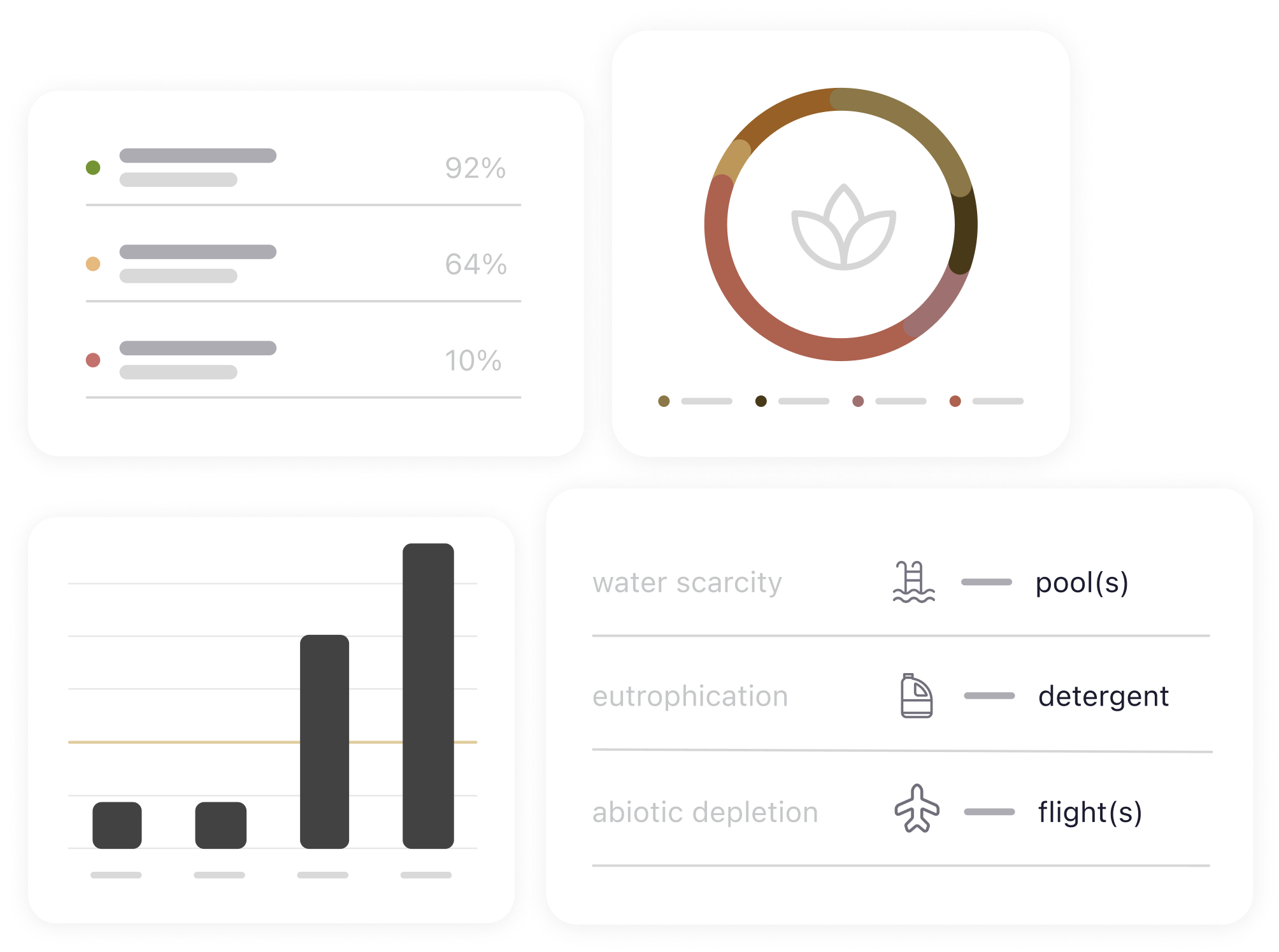The end of the year is approaching, and it’s time to start gathering the information your fashion company needs for its upcoming annual sustainability report. Legislative pressures and the growing demand for transparency from the public have led many fashion brands to prepare these reports each year, showcasing their achievements and setting goals for the months ahead. In this article, we will share the key metrics and steps you should follow so that you don’t feel lost when creating your fashion business’s annual sustainability report.
The end of the year is approaching, it’s time to gather the information your fashion company needs for its upcoming annual sustainability report
Why does your fashion brand need an annual sustainability report?
You may not have considered the need to draft a report that compiles your fashion business’s sustainability performance until now. However, there are many reasons that may motivate you to start doing so from this point forward:
- Encourage honesty and build consumer trust. Publishing a regular sustainability report demonstrates your commitment to transparency. This will help you build trust not only with consumers but also with investors and other stakeholders.
- Ensure regulatory compliance. Sustainability regulations are constantly evolving. By preparing an annual report, you ensure that your brand complies with current regulations and avoids potential penalties that could affect its reputation. Among these regulations is the Corporate Sustainability Reporting Directive, which establishes a series of sustainability criteria that must be communicated annually, as well as the Due Diligence Directive, which requires reporting on measures taken to identify, prevent, mitigate, and account for actual and potential adverse impacts of business operations.
- Stand out from the competition. In a saturated market, differentiation is key. A well-crafted sustainability report allows you to showcase your commitment to sustainability. Consumers are increasingly interested in understanding what lies behind brands and demonstrating a strong commitment can help you attract a broader and more loyal audience.
- Promote continuous improvement. Evaluating your sustainability efforts allows you to identify areas for improvement and advance effectively. Use the report to set clear goals and measure your progress with quantifiable data that accurately reflects the reality of your supply chain. Remember, you can only improve what you understand thoroughly.
- Strengthen your brand image. A strong commitment to sustainability not only enhances your image but also boosts your reputation in the market. According to a report from McKinsey and NielsenIQ, responsible brands are more valued by consumers, which can translate into greater loyalty.
You are just five steps away from drafting your annual sustainability report
Key steps to create an annual sustainability report
Even if you recognize the relevance of presenting a sustainability report, you may still be unsure of where to start drafting it. You are just five steps away from achieving this:
- Define the purpose of the report. Before you begin, ensure you have a clear understanding of the report’s goal. It’s not the same to prepare a report for internal company communication, for investors, or for the general public. The content, format, and approach will vary depending on the audience.
- Review last year’s KPIs. It’s time to dust off the goals defined in the previous report and assess whether they have been met. This will provide you with a baseline to measure progress and make adjustments if necessary.
- Select the system for collecting information. Decide how you will gather the information. Will you use an external partner, an internal team, or a combination of both? Be sure to include both quantitative and qualitative data to obtain a comprehensive view.
- Compare your results with previous data. Check if you have past data that allows you to compare the current results. This will help you identify trends and evaluate the impact of the actions implemented.
- Set your goals and define measures to achieve them. Define the actions you will take to close the gap between your current situation and the targets you wish to achieve. This may include new strategies, practices or investments.
If you lack the data needed, consider using tools and expert professionals to help you access it
What metrics to include in your sustainability report?
When preparing a sustainability report, it’s essential to adopt a multidimensional approach that considers not only the environmental impact but also the social and economic dimensions of your company. To achieve this, it is crucial to select the right metrics that reflect the complexity of your operations. Here are some key criteria to guide you in this task:
- Relevance to your sustainability goals. The metrics should align with the strategic targets of your brand. Ask yourself how each metric contributes to your sustainability goals and which aspects of your operations are a priority. A clear focus will allow you to highlight what is most important and ensure that the report is relevant for both your company and your stakeholders.
- Consideration of stakeholders. Consider the interests and concerns of your key stakeholders, such as employees, investors and end consumers. The selected metrics should address their concerns and expectations, which will facilitate building trust and credibility. By understanding their needs, you can choose indicators that highlight your commitment to sustainability in all its dimensions.
- Availability and accessibility of data. Assess your organization’s ability to collect and analyze the necessary data. It is crucial that the selected metrics are accessible and that you can provide accurate and reliable information. If you lack the data needed to evaluate a specific metric, consider using tools and expert professionals to help you access it.
- Comparison and context. Choose metrics that allow you to compare your performance over time and with industry standards. This will help you assess your progress and identify areas for improvement in each dimension of sustainability. The ability to compare will enrich the report and provide a clearer view of how you position yourself in the market.
- Balance between quantitative and qualitative metrics. Quantitative metrics, such as resource consumption reduction, offer clear and measurable data. On the other hand, qualitative metrics, such as testimonials about the social impact of your initiatives, provide a richer and more contextualized perspective on your sustainability efforts.
At BCome, we have developed an exclusive template to help you draft your annual sustainability report. This tool, designed specifically for professionals in the fashion industry, is already available! Would you like access to it? Feel free to join our waitlist!
In the meantime, if you want to learn how BCome’s solutions can support the creation of your annual sustainability report, don’t hesitate to contact us. We’ll be delighted to understand your needs.









